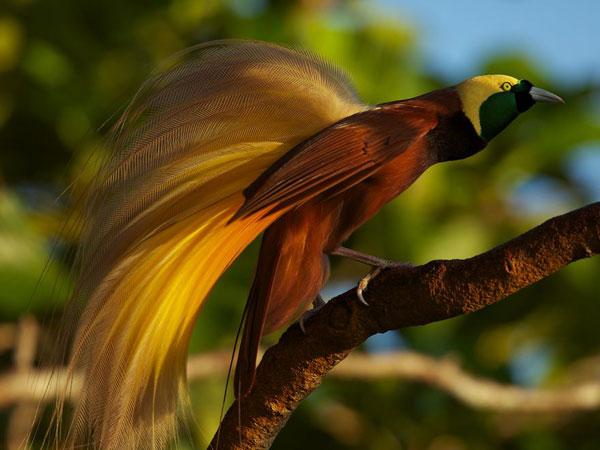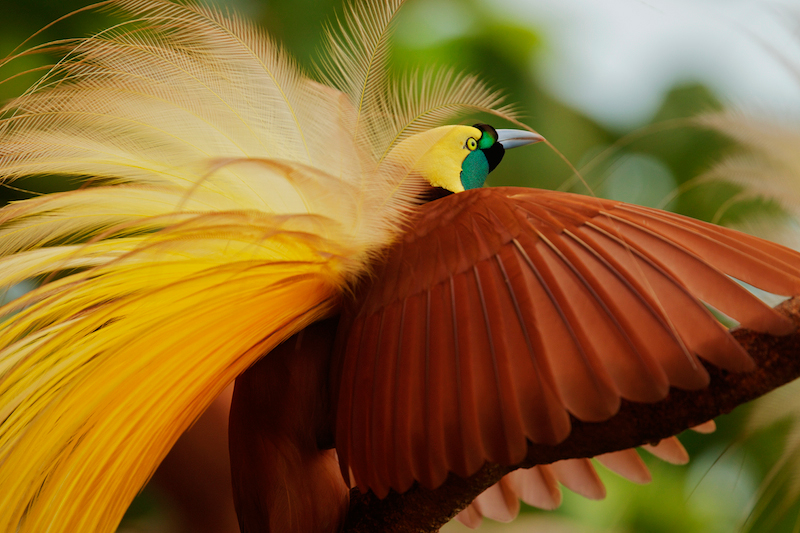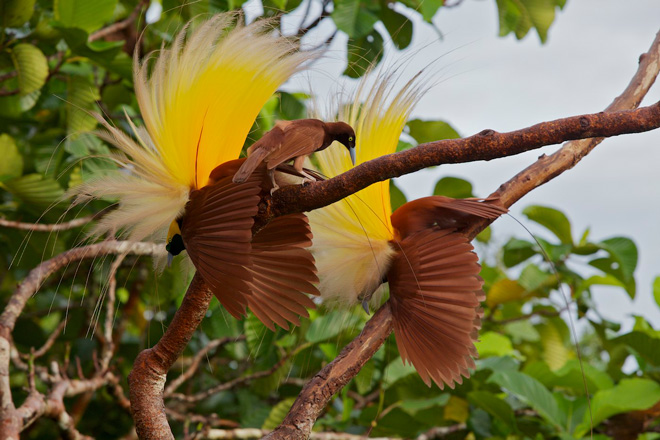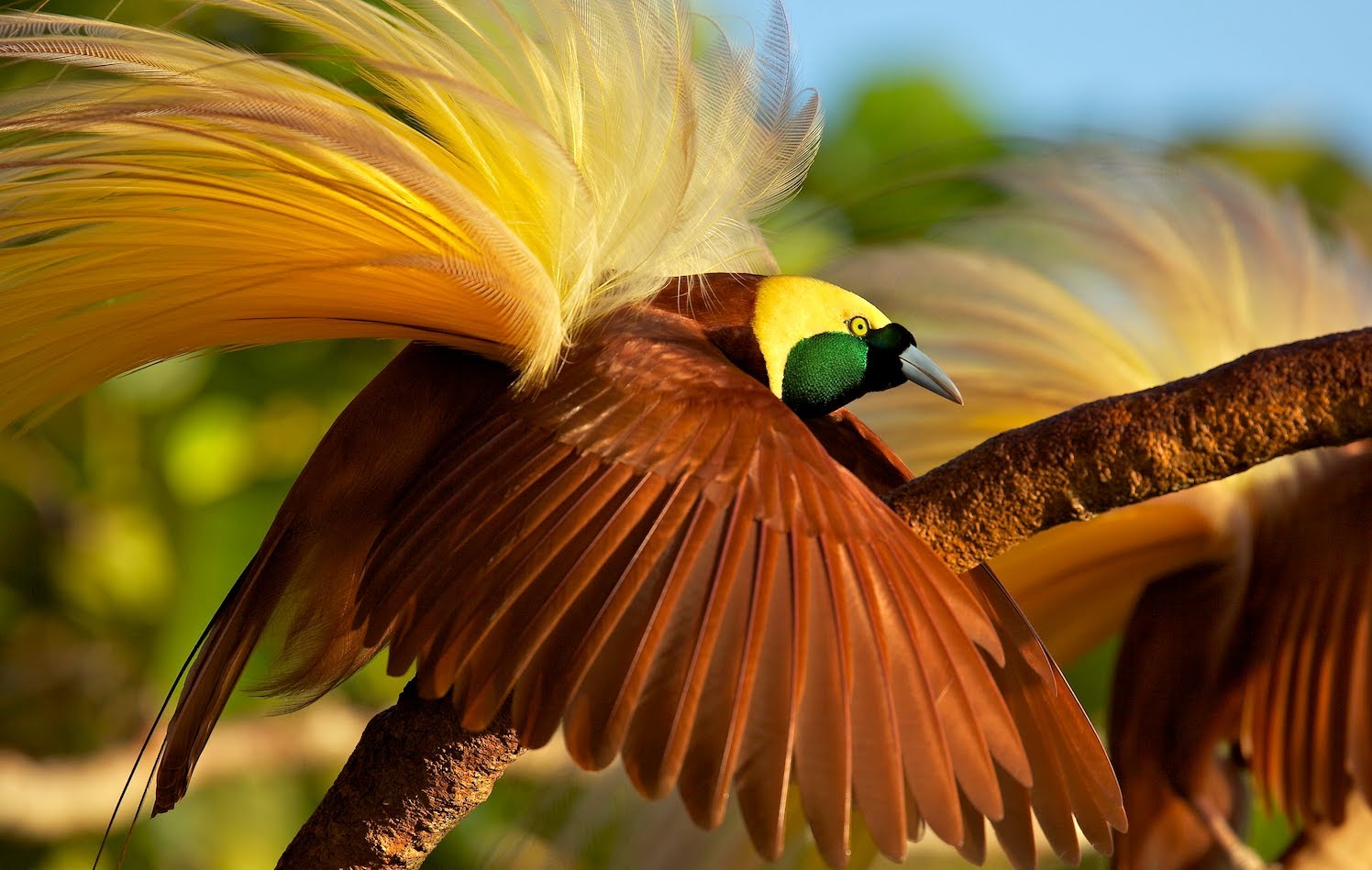
Paradisaea apoda
SUBFAMILY
Paradisaeinae
TAXONOMY
Paradisaea apoda Linnaeus, 1758, India = Aru Islands of
Indonesia. Two subspecies.
OTHER COMMON NAMES
English: Great bird of paradise; French: Paradisier grandйmeraude;
German: Gцttervogel; Spanish: Ave del Paraнso
Grande.
PHYSICAL CHARACTERISTICS
13.8–16.9 in (35–43 cm); female 0.37–0.38 lb (170–173 g), male
(no weights avialable). The largest of the plumed birds of paradise.
Forehead to nape a pale orange-yellow. Forecrown, lores,
ear coverts, chin, and throat have fine, iridescent yellowish green
feathers. Dark brown ruffled feathers form a breast cushion;
brownish upperparts, tail, and abdomen. Bright yellow elongated
flank plumes fade to whitish with beige tips. Bill is pale bluish
gray. Females drab brown in color and lack long feathers.
DISTRIBUTION
The south of the western half of the New Guinea mainland,
excluding the western peninsulas, and the Aru Islands. Lowlands
to about 3,300 ft (1,000 m) altitude. P. a. apoda: Aru Islands of
Irian Jaya, Indonesia; P. a. novaeguineae : southern New Guinea
from Timika, Irian Jaya, eastward to the Fly/Strickland Rivers
watershed, western Papua New Guinea.
HABITAT
Lowland and hill forests.
BEHAVIOR
Males remove foliage from lek perches. Males are highly vocal
and perform animated flank plumage manipulations, body postures,
and movements about lek perches in courtship display.
The most common lek advertisement song consists of repeated
loud, deep, wauk or wonk notes.
FEEDING ECOLOGY AND DIET
Actively animated in foraging. Eats fruits and animals (mostly
arthropods).
REPRODUCTIVE BIOLOGY
Polygynous, with intensely lekking and promiscuous adult
males forming loudly vocal aggregations at traditional display trees. Breeding during at least August through December,
March, and May. Known clutches are all of one egg. Incubation
and nestling periods unknown.
CONSERVATION STATUS
Sufficiently widespread and common to be of no concern as a
species, but some local populations have declined.
SIGNIFICANCE TO HUMANS
Adult males were of great significance to the plume trade but
modern usage is restricted to local head dress adornment. Live
and stuffed adult males are, however, still traded throughout
Indonesia and beyond, and this illegal exploitation could represent
a limited threat to some populations.
Other popular Animals
Photo Gallery of - Greater bird of paradise




 Animalia Life
Animalia Life